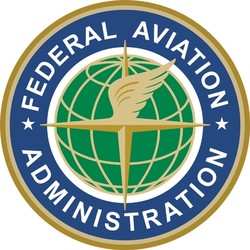Thu, Jan 30, 2014
Has Advocated For The Change For Several Years
The NBAA welcomed changes enacted on Jan. 27 by the FAA that will streamline the process for operators seeking to receive a letter of authorization (LOA) for operations in Reduced Vertical Separation Minima (RVSM) airspace above 28,000 feet MSL. NBAA representatives, who first brought the challenges related to RVSM authorization to the attention of FAA officials several years ago, have been among the participants on a joint industry/agency task force focused on ways to streamline the authorization process. The task force sought to establish standardized procedures for operator input and FAA inspector review, in order to reduce inconsistent application of the regulatory requirements, as well as the amount of time required to process RVSM authorizations.

In May 2013, the team presented its recommendations to the FAA's Performance-based Operations Aviation Rulemaking Committee (PARC), incorporating guidance to simplify the LOA process, in large part through acknowledgement of previous operator and aircraft experience, and prior approvals for RVSM-mandated aircraft equipment and training processes.
Mark Larsen, NBAA’s senior manager, safety and flight operations, noted the FAA’s final policy is in line with recommendations made by the task force to improve the LOA inspection process, while maintaining the continued operational safety in the national airspace system. "We believe this will allow a significant shift in an inspector's predisposition when conducting a review, particularly when handling relatively simple administrative changes for existing operators," Larsen added. "Whereas earlier guidance dictated that an inspection had to always begin at square one - even for something as minor as a tail-number change - now the inspector may accept an operator's demonstration of unchanged items and focus their time on reviewing the actual changes made.

“Additionally,” Larsen continued, “We are hopeful that the lessons learned in developing this process can be applied to the broad range of other required approvals for business aircraft operations.”
FAA aviation safety inspector Madison Walton, AFS-470, joined aviation attorney David Norton of Shackelford, Melton, McKinley & Norton, LLP in co-chairing the joint task force. Personnel from AFS-800, AFS-300, and Flight Standards District Offices were included on the agency team as subject matter experts, while representatives from aviation organizations, manufacturers, RVSM product providers and other stakeholders offered industry perspectives. "We spent a lot of time on this, and the outcome will benefit both operators and the FAA," Norton noted. "We had some really dedicated, professional and practical personnel working on this issue, and we each listened to concerns from all sides before finding a flexible solution to speed up the administrative process. This was an extremely positive experience.”
The changes to the RVSM authorization process were formally announced during a General Aviation Safety Summit hosted by agency Administrator Michael Huerta. NBAA has chaired a coalition of GA groups represented at the Summit for the past two years.
More News
Aero Linx: International Federation of Airworthiness (IFA) We aim to be the most internationally respected independent authority on the subject of Airworthiness. IFA uniquely combi>[...]
Ultrahigh Frequency (UHF) The frequency band between 300 and 3,000 MHz. The bank of radio frequencies used for military air/ground voice communications. In some instances this may >[...]
A Few Questions AND Answers To Help You Get MORE Out of ANN! 1) I forgot my password. How do I find it? 1) Easy... click here and give us your e-mail address--we'll send it to you >[...]
From 2019 (YouTube Edition): Learning To Paint Without Getting Any On Your Hands PPG's Aerospace Coatings Academy is a tool designed to teach everything one needs to know about all>[...]
Also: Sustainable Aircraft Test Put Aside, More Falcon 9 Ops, Wyoming ANG Rescue, Oreo Cookie Into Orbit Joby Aviation has reason to celebrate, recently completing its first full t>[...]
 ANN's Daily Aero-Linx (05.06.25)
ANN's Daily Aero-Linx (05.06.25) ANN's Daily Aero-Term (05.06.25): Ultrahigh Frequency (UHF)
ANN's Daily Aero-Term (05.06.25): Ultrahigh Frequency (UHF) ANN FAQ: Q&A 101
ANN FAQ: Q&A 101 Classic Aero-TV: Virtual Reality Painting--PPG Leverages Technology for Training
Classic Aero-TV: Virtual Reality Painting--PPG Leverages Technology for Training Airborne 05.02.25: Joby Crewed Milestone, Diamond Club, Canadian Pilot Insurance
Airborne 05.02.25: Joby Crewed Milestone, Diamond Club, Canadian Pilot Insurance




